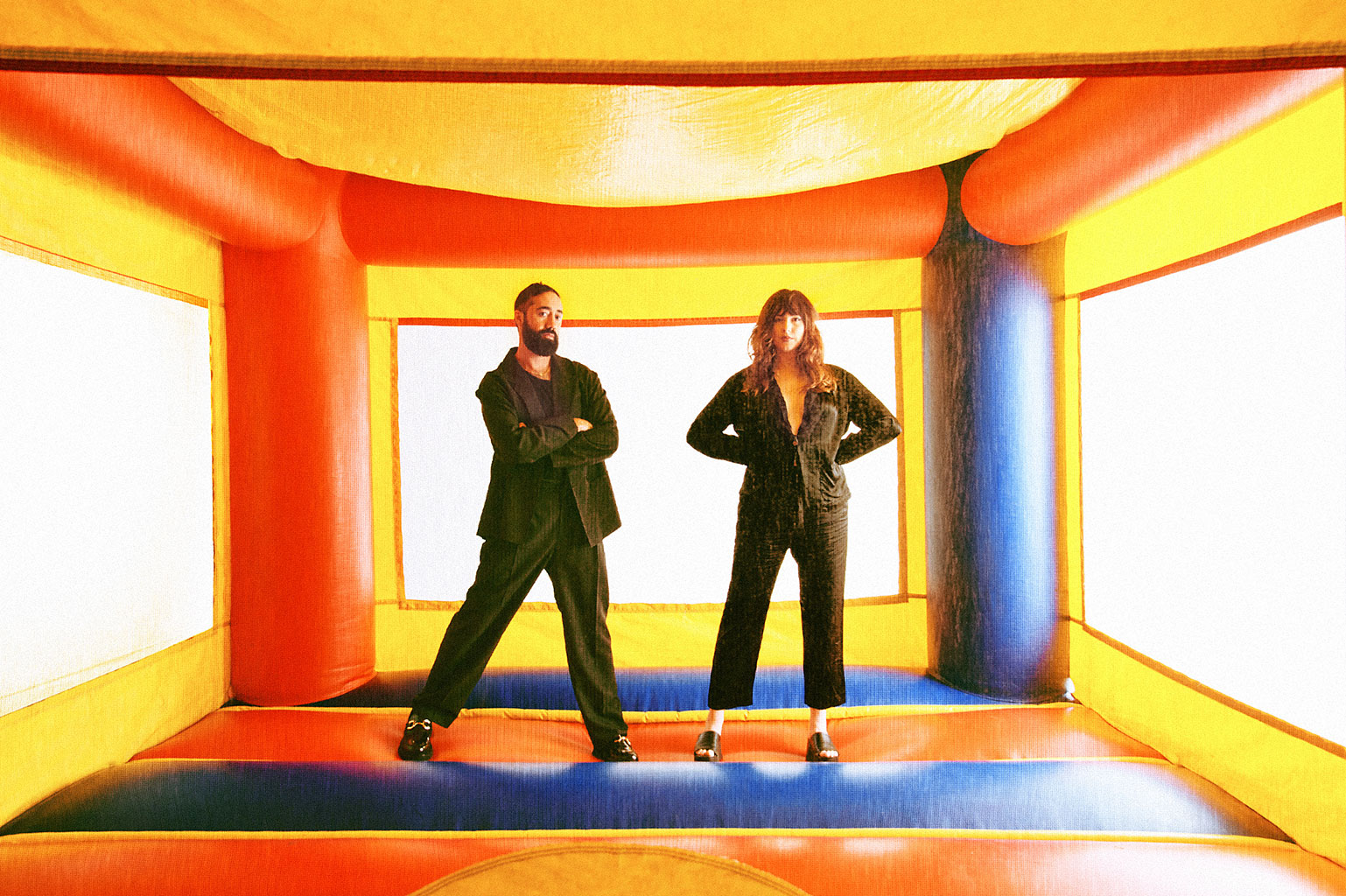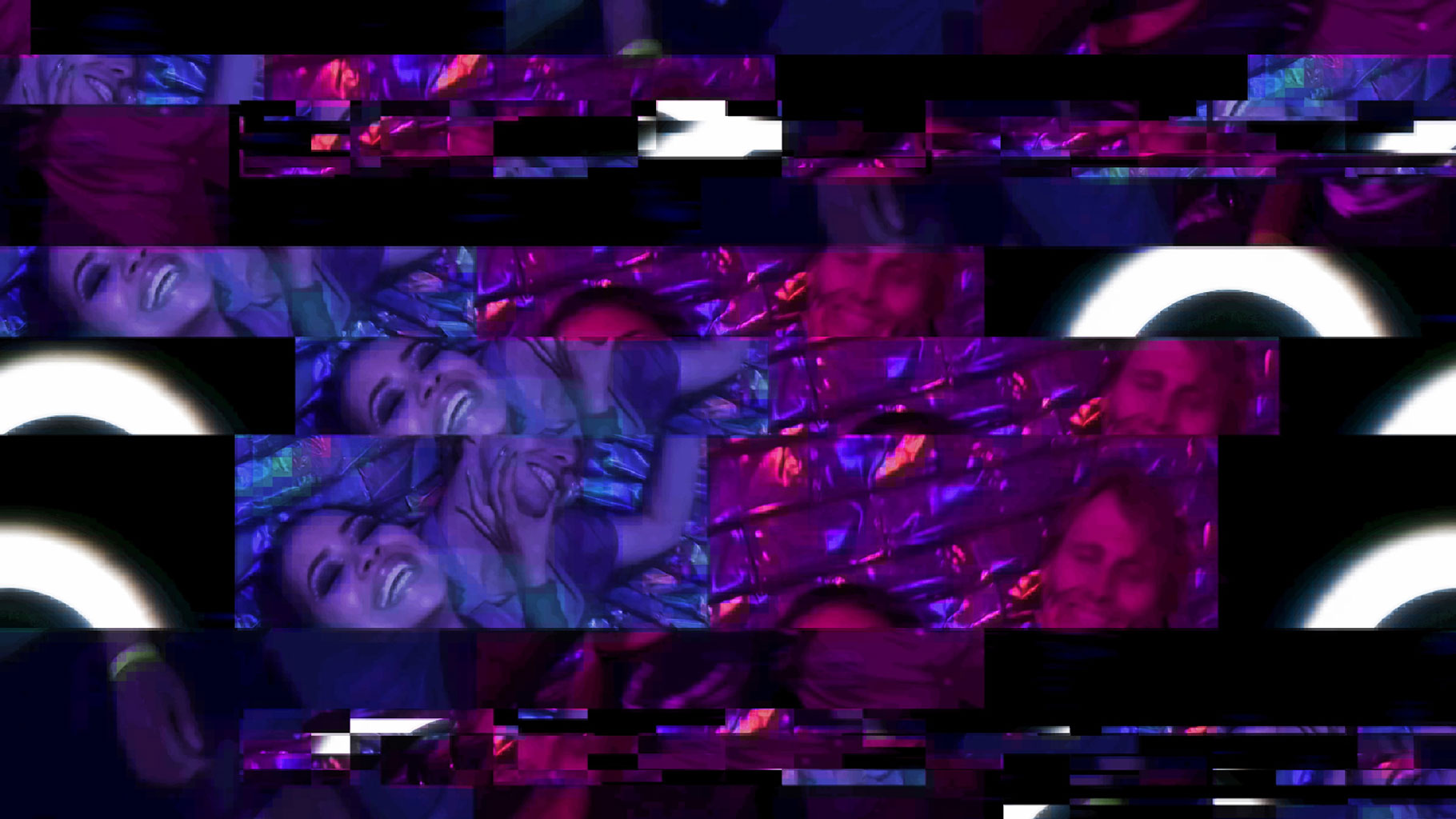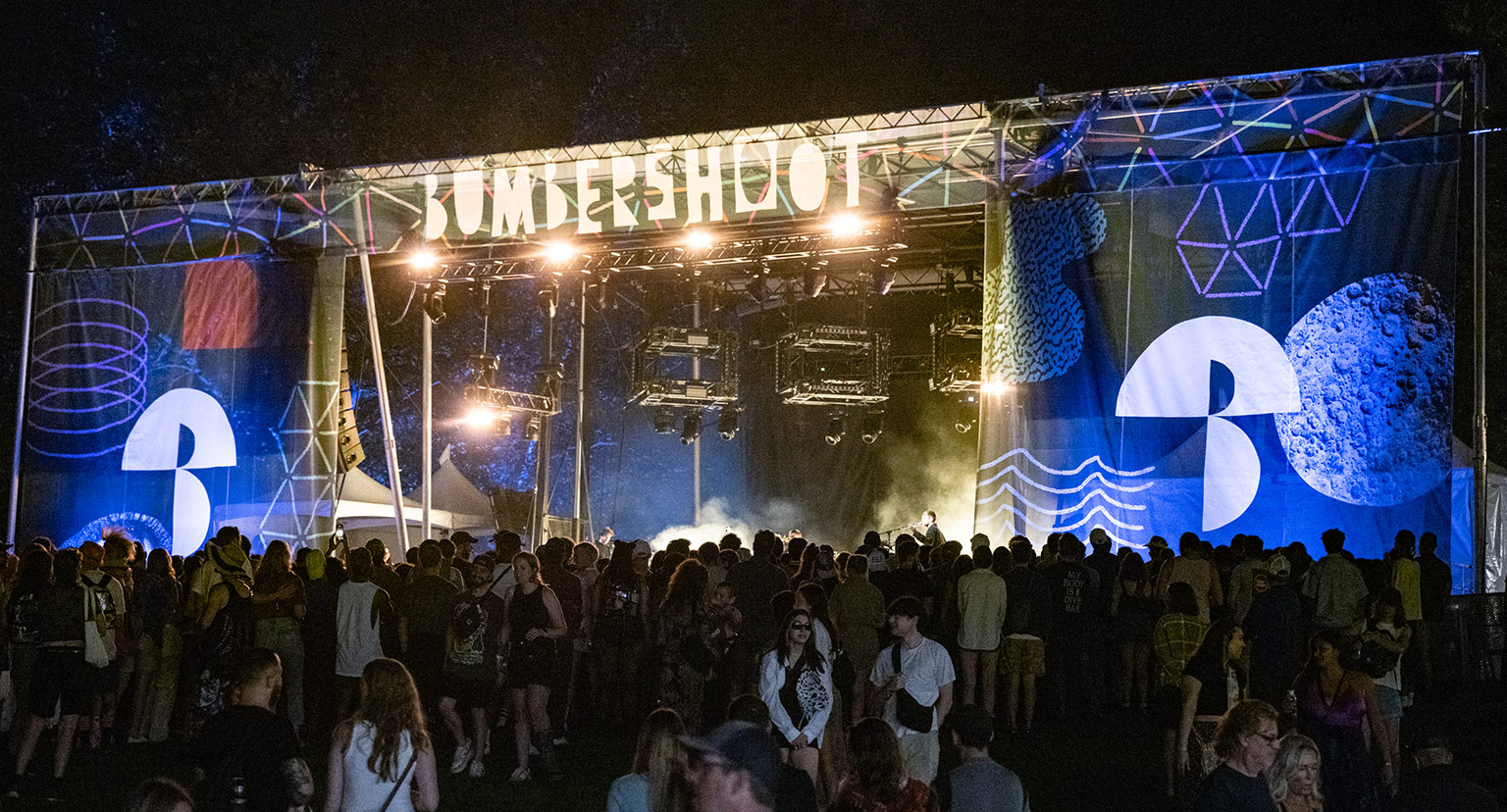This review highlights some notable shows from Decibel 2012, ranging from excellent to quite mediocre, and includes write-ups of Andy Stott, Jimmy Edgar, Clark, Demdike Stare, and Orbital.
Jimmy Edgar
The Decibel Festival guide claimed that the Warp Records showcase on Wednesday evening would be for fans of Prince, which led to some confusion for me. Would that be in reference to main headliner and mad music scientist Clark? Certainly not. Then who?
The winner of the prestigious association — and pleasant surprise for the festival — turned out to be 1983-baby and astrology-enthusiast Jimmy Edgar. Edgar, a most handsome and dapper fellow, rose to the stage behind a stripped-down version of the LED light rig he usually travels with, ready to perform his 2012 Hotflush release, Majenta. No hitches here, it seemed… until the projections behind Edgar began to fill the screen.
The generic and low-quality visuals, which were more suitable for Windows 95 screensavers than for Edgar’s clean productions, seemed like a stock offer from Decibel rather than Edgar’s own choice. They became a painfully glaring and vibe-dampening reminder that the newfound “necessity” of supplying electronic shows with accompanying visuals can sometimes go awry when the visuals are tasteless, or of a different taste than the musician’s music. They were distracting, to say the least, and it was unfortunate that habit dictated that they received much more attention than they warranted. (Apologies, I suppose, if they are indeed Edgar’s creation, though I doubt it, and the criticism remains.)
Unfortunate visuals aside, Edgar queued up quite a dance party by passionately embracing every type of electronic music that might even be tangentially related to Prince — from C&C Music Factory-type club jams and dirty ’80s breaks to breathy R&B-influenced slow jams. Soul was at the heart of all of Edgar’s music, and its presence in his body was also clear, from his intense concentration to his spontaneously fabulous uses of vocoder. Such sensory vibage was not lost upon the audience, either. Never have I seen a grouping of men so stoked about the performance of another man, as man after ecstatic man screamed, “Jimmaaaay!!!!!” as though they were going to tear their shirts off in support of Edgar at any given minute. Twas one of the best shows I saw at Decibel, and most certainly one that made a lasting impression.
Clark
UK producer Chris Clark took the stage after Jimmy Edgar to equally adoring fans, including one next to me who wouldn’t stop showing off all of the LPs he had just bought and continuously called Clark by his first name, as though they were actually friends. But just as a shirt-ripping crowd seemed appropriate for Edgar, so did a fanatic one for Clark.
By contrast to Edgar, the visuals accompanying Clark’s set were very much his own and matched the existing aesthetic found in his music videos and on his album covers. High contrast images with loads of film grain provided backgrounds for collaged and dismembered body parts to float around in surreal form. Clark’s workstation, half comprised of a ridiculously tangled mass of cables, also added to a general sense of disorder that matched his sonic output. As a performer, he seemed only minorly concerned about reaching the right moment at the right time. He was sloppy in many of his transitions and definitely in his portrayal of who he is as an artist; he banged blindly at his Moog synthesizer and often cut off beats halfway as he filtered them.
But somehow it’s all okay, because it’s Clark. The frenetic energy he typifies comprises a good portion of his charm and appeal, not necessarily his tendency towards order. From moment to moment, one has absolutely no idea where Clark is headed or what he might do to throw the audience for a loop, but it seems clear that he too has no idea. His performances are brilliant in a similar way that Pavement’s performances are brilliant; they seem completely irreverent. But just as with Pavement, the lack of concern for the audience can become obnoxious at points, particularly for anyone who might want a real dance party. Killing momentum in a set is only part of the game for Clark, and it is certainly not cause for apology. Luckily, his music in and of itself is so impressive, and he manufactures such wonderful sounds out of his extensive hardware setup alone, that his knob-twiddling prowess is enough to command one’s attention.
SEE ALSO: CLARK + WARP RECORDS
Demdike Stare
I was greatly looking forward to the Modern Love showcase, where Andy Stott, Demdike Stare, and Cut Hands would be playing. I had already seen Demdike Stare score Jean Rollin’s La Vampire Nue film live earlier in the week, but despite occasional moments of excellence, it had been very forgettable. I imagined their showcase set would be a vast improvement, as they would be working from their own material this time around. I imagined wrong. Their set was predictably full of dark and droning ambient sounds, accompanied by vintage collages of nature and nude women — but unfortunately, the sounds were far from captivating, and the visuals were apparently a repeat from a previous Seattle show.
Perhaps my vantage point gave Demdike Stare a disadvantage. I was so close to them I could see every button they were pressing and every piece of gear they were using, so I was able to see the awkwardness in which they crossed over one another to share the same pieces of equipment. Spontaneous creations are certainly nothing new in live electronic music, but Miles Whittaker and Sean Canty looked as though they were figuring out how to use their equipment as they went, and their movements seemed under-practiced and completely stilted. At certain segments, textured layers were turned off abruptly as though by accident, creating huge gaping holes where there should presumably have been smoother transitions. The surprised looks on their faces after these hiccups seemed to firmly drive the point home that they weren’t planned misfortunes, though I suppose they could have been stylistic. If so, they were stylized poorly.
It was clear from the crowd’s enthusiasm, though, that they were less skeptical than I was. Demdike Stare’s one-note tooting was exactly what they wanted. And while I agree that there were certainly moments when the duo got into a satisfying groove, I’d expected more.
Andy Stott
To follow Demdike Stare was UK producer Andy Stott, who jumped right into his set with little prep or transition time. Less experimental and gnarly this evening than many of his recorded outputs or his festival showcase partners would’ve led one to believe, Stott upped the entire vibe with energy and all-star dynamism, though he never strayed far from dark and minimal house.
Even so, Stott managed to expertly squeeze in as many satisfyingly pop-structured vocal samples as possible without rendering his set trite, and he had a unique ability to use subtle cues that fell under one’s conscious radar. The stepping stones he snuck in to lead from breaks back into beat drops were always so slight that they were subconsciously successful in preparing a listener to dance when the proper moment came — but one would’ve never realized his trick unless one were paying attention. Stott’s music also stood so powerfully by itself that the horribly mismatched projections of landscapes slowly passing by were conveniently and thankfully omitted from one’s memory, so that one was free to concentrate on the heavy rhythms and the darkness elsewhere in the room.
Next to Jimmy Edgar, Stott’s set was the best one that I saw from Decibel Festival. It was well past 1:00am by the time he came on and I had been destroyed by multiple days of festival carousing, but even so, I couldn’t make myself leave. This captivation paid off. Stott ended his set with a completely unexpected change of pace, by breaking out of the 4/4 mold and into a drumstep or halftime drum n’ bass track that was pummeling and satisfyingly free of frills.
Orbital
Celebrating their first United States tour in over a decade, Orbital were much talked about performers throughout Decibel Festival, and whether or not they could live up to their past reputation was very much a question on everyone’s mind.
As large electronic acts are wont to do these days, the brotherly duo traveled with an extensive lighting and LED display rig. They were selective in its use, turning it off at times in favor of darker or more traditional lighting mechanisms, and I definitely appreciated the occasional respite from sense data overflow. That’s one thing they did right.
Twenty minutes into Orbital’s set and one quickly gathered the other major thing they could do right: transitions. My favorite one of the evening featured the aggressive rapping of a female musician who recalled Nicky Minaj at her strongest. The lyrics, which machinegunned with quick-paced “now now now”‘s and “wow wow wow”‘s, built until they skyrocketed into the sonic stratosphere and eventually erupted into a beat drop. These moments, coupled with Orbital’s neverending desire to fist-pump and emote with their hands, certainly hyped up what I would call a generally undiscerning crowd.
But here the positives stop. Transitions were probably Orbital’s strongest suit was because they used them so often that they became experts at them. The duo’s fist-pumping breakdowns became so predictable that one could count on their resurgence every 16 bars. Even worse was that break after break and build after build, Orbital would bounce back in with breakbeats — a style of electronic music that has grown tired since the days when The Crystal Method and The Prodigy were still at the top of the electronic music scene. Even if Orbital’s breakbeats were huddled beneath Irish faerie-like swells or slightly harsh electronic noises, their moves were unpalatably obvious throughout their entire set, with only the occasional dubstep or house variation.
It makes some sense that Orbital might be a bit rusty and a bit confused about what to offer showgoers on their first stateside shows in some time. But what they should realize is that the Orbital the majority of people know and love is not the current Orbital they are offering. What the audience probably wants is the Orbital that is at least 150% more experimental and more willing to take a risk with different types of music, different types of transitions, and simply pushing the envelope, if even slightly. And sure, that Orbital existed a long time ago, but that Orbital is one they should keep mind of if they want to continue their legacy with any kind of relevancy.
Decibel Festival Photo Gallery
PHOTOGRAPHY BY LYMAY IWASAKI
Monolake
Dalot
Natasha Kmeto
Machinedrum
Ω







[…] hop around gleefully, and those without to best use your money and time. Last year’s festival featured some of my favorite shows of 2012; I expect this year to be no different. Happy tenth birthday to one of the best fall festivals […]